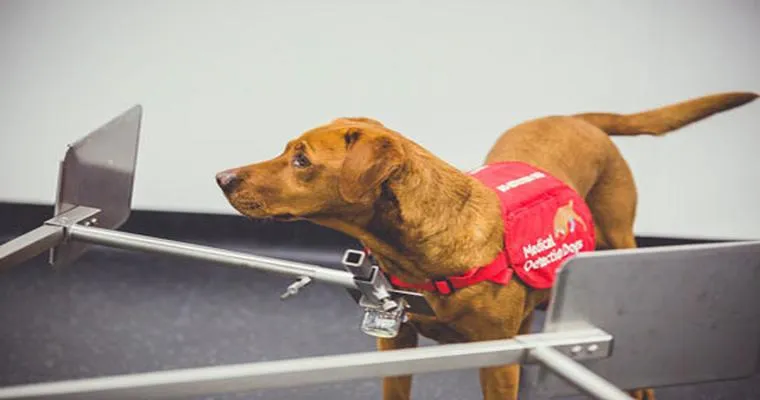In recent years, the fascinating world of "canine cancer detectors" has emerged as a groundbreaking approach to improving "cancer diagnosis" in humans. These remarkable dogs possess an extraordinary ability to sniff out cancerous cells with their acute sense of smell, which can be significantly more effective than some traditional diagnostic methods. This innovative use of "dogs in medical detection" not only offers a potential for earlier diagnosis but also opens new avenues for understanding how we can combat this devastating disease.
The concept of using dogs to detect cancer is not entirely new. Research has shown that dogs can identify various types of cancer, including "breast cancer", "lung cancer", and even "melanoma", through their keen olfactory senses. Dogs have up to 300 million smell receptors in their noses, compared to about 5 million in humans. This biological advantage enables them to detect volatile organic compounds (VOCs) emitted by cancerous cells, making them invaluable allies in early detection efforts.
The implications of this research are profound. Early diagnosis is crucial in the fight against cancer, as it significantly increases the chances of successful treatment and survival rates. Traditional methods such as blood tests, imaging, and biopsies can sometimes miss early-stage cancers or lead to false positives. In contrast, "canine cancer detection" provides a non-invasive, cost-effective, and highly accurate alternative that could complement existing diagnostic techniques.
Numerous studies have highlighted the success of canine cancer detection. For instance, a study published in the journal "BMJ" revealed that trained dogs could accurately identify lung cancer in breath samples with an impressive accuracy rate of over 90 percent. These findings encourage further research into the potential of dogs as diagnostic tools, paving the way for their integration into clinical settings.
Moreover, the use of "canine companions" in cancer detection aligns with the growing trend of utilizing animals in healthcare. Therapy and support animals have already proven their worth in various medical fields, and the prospect of dogs assisting in cancer diagnosis is an exciting development. Not only does this approach harness the natural abilities of dogs, but it also fosters a unique bond between humans and animals, enhancing the overall patient experience.
As scientists continue to explore the mechanisms behind dogs' ability to detect cancer, there is a growing emphasis on training and certification programs for these "detection dogs". Establishing rigorous standards will ensure the reliability of their findings, making it feasible for healthcare providers to incorporate them into routine screenings.
In summary, the potential of "canine cancer detectors" to revolutionize "cancer diagnosis" cannot be overstated. As research progresses, we may soon see dogs playing a critical role in early detection, leading to improved patient outcomes and a deeper understanding of cancer biology. By acknowledging and harnessing the unique talents of our canine friends, we are not only advancing medical science but also bringing hope to countless individuals affected by cancer.





